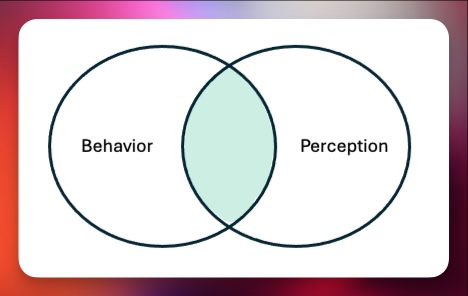Effective leadership extends beyond strategic decision-making, clear communication, empathy, and empowering others. These elements are important for successful leadership and provide a framework for guiding teams and organizations toward achieving their goals. Strategic decision-making involves analyzing situations, anticipating future challenges, and crafting plans that align with the organization's vision and objectives. Clear communication ensures that these plans are understood and embraced by all stakeholders, fostering a sense of direction and unity.
Empathy allows leaders to connect with their team members on a personal level, understanding their needs, motivations, and concerns. This emotional intelligence builds trust and loyalty, which are essential for maintaining a motivated and engaged workforce. Empowering others involves delegating authority, providing opportunities for growth, and recognizing individual contributions, enabling team members to take ownership of their work and develop their skills.
While these are certainly important aspects of effective leadership, they do not give us a complete picture. Something is missing. Effective leaders must also be perceived as effective. This perception is shaped by many factors, including the leader's actions, communication style, and the relationships they build. A leader might excel in strategic decision-making and clear communication, but if they are perceived as distant or unapproachable, their effectiveness can be significantly undermined.
What is Missing from the Effective Leadership Picture?
Effective leadership can be characterized as doing the right thing at the right time in the right way for the right reasons -- or more simply stated as “engaging in appropriate leadership behaviors.” These behaviors are context-dependent and require an understanding of the organizational culture, team dynamics, goals, and any number of specific challenges. Appropriate leadership behaviors might include being decisive in a crisis, showing flexibility in the face of change, or demonstrating resilience during tough times.
Yet, there's that missing piece to consider: The alignment between a leader's behaviors and the perceptions of those behaviors by others. This alignment is vital because it influences how the leader's intentions are interpreted and is also applied to the legitimacy of the leader’s authority. If a leader's actions are misinterpreted or viewed negatively, even well-intentioned decisions can lead to resistance and disengagement.
Effective leadership is not only about what a leader does but also about how their behaviors and actions are perceived and received by others. This requires leaders to be not only competent in their roles but also skilled at managing perceptions, building positive relationships, and fostering an environment of trust and transparency.
Two Key Elements
Effective leadership requires two elements: First, a leader must demonstrate appropriate leadership behaviors. Second, others must perceive the leader as engaging in appropriate leadership behaviors. These two requirements are separate yet connected.
Implicit leadership theory, though not a leadership theory that is top-of-mind, is inherently present in almost everyone. Whether we realize it or not, we all use implicit leadership theory to inform ourselves about who is and who is not a good leader. This theory suggests that everyone has an inherent idea of what makes an effective leader or what an effective leader looks like. When a leader's actions and behaviors align with what we believe internally, we then believe that leader is an effective leader. Most of this happens at a subconscious level. Understanding this is crucial for leaders – it will help them focus on improving their overall effectiveness. In addition to doing the right things, leaders must also ensure that their actions are perceived appropriately by those they serve as being the right things.
By becoming aware of their followers' implicit expectations, leaders can improve their ability to navigate the complexities of perception and align their behaviors accordingly. They can also engage in activities to help inform and modify others' expectations.
Perception Management
Perception management is an important part of effective leadership. Leaders can do this by communicating their intentions clearly, seeking feedback to understand how their actions are perceived, and adjusting as necessary to bridge any gaps between their actions and others' expectations. Additionally, leaders can use communication strategies that broaden awareness and educate others.
Imagine a Venn diagram with two overlapping circles. The left circle represents appropriate leadership actions and behaviors, while the right circle represents the perception of these actions and behaviors.

Highly Effective Leaders
The overlap of the two circles represents highly effective leaders. These leaders focus on doing the right things at the right time in the right way for the right reasons and understand the need to connect with others to ensure the value of their actions is recognized and appreciated. This overlap, the combination of appropriate actions and their perception, is the zone of highly effective leadership.
Highly effective leaders operate in this zone by consistently aligning their actions with both the strategic goals of the organization and the expectations of their followers. They are not only good at making sound decisions and executing plans efficiently but are also skilled in the art of perception management. This involves a deep understanding of their audience — knowing what their team, stakeholders, and broader community expect and value in leadership.
For a leader to be fully effective, those they work with, lead, and serve — regardless of their position within the organization or community — must support and follow them. This support and followership are often predicated not just on the leader's actions but also on the alignment between these actions and the implicit leadership expectations of others.
Understanding this zone of effective leadership helps us see that these two factors must come together. A highly effective leader must perform the right actions at the right time in the right way, and others must perceive them as doing so. This means that leaders must be attuned to the expectations and perceptions of their followers and actively manage these perceptions.
Wrapping it up
The zone of highly effective leadership is dynamic — it is constantly changing — and requires continuous effort to maintain alignment. Leaders who operate in this zone understand this is an ongoing process. They are committed to self-improvement and remain flexible and responsive to feedback and changing circumstances.
Latest posts by Philip Espinosa (see all)
- How Leaders Are Perceived Matters More Than You Think - June 16, 2024
- Overcoming Negative Friction - May 26, 2024
- Turn Engagement Upside Down - April 23, 2024












